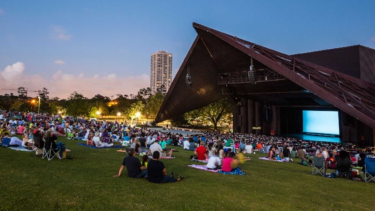
Outdoor events have a host of problems unique to themselves, from permits to being prepared for bad weather. With proper planning you can ensure your event succeeds satisfying not only your client but your attendees as well. These can be lovely, but be forewarned — outdoor events are sometimes much more difficult to organize than indoor events.
Here are some tips on how to plan an outdoor event and to minimize stress:
1. Get a permit
Do this as soon as you’ve finalized where and when you'll have your outdoor event. Do this first. The fastest way to shut down an event is to hold it without a permit.
2. Check up on all ordinances
What are the noise ordinances? Every town has them. Is noise prohibited after a certain time? You should also look into fire and safety codes. The latter may have restrictions on overselling tickets, advertisements, and seating. Talk to the state and local authorities, the local fire department and the police about these.
3. Some outdoor events need more work than others
Is your event being held in an already existing outdoor facility? Great! That cuts your work in half. Otherwise, are you targeting a raw, uncommon area? Then advanced planning and coordination are critical. You can expect to be in charge of everything — power, toilets, communications, equipment, and food, among others. Make arrangements to bring everything to the venue, and taking everything out of the venue after the event is done.
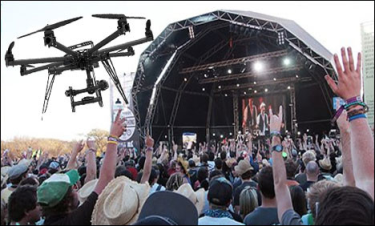
The use of drones at events is becoming more common every day. In fact, drones are one of the hottest event tech trends, and they’re being used in a wide variety of creative ways at all kinds of events. From indoor conferences to outdoor festivals, drones are providing entertainment, advertising, security, and more.
While drones can be an exciting addition to your event, you need to think about your goals before you invest. Fortunately, drones can be very affordable – depending on how you want to use them. As a result, it can be easy to fall into the trap of adding drones to your event just because they’re trendy. The reality is if drones aren’t a strategic element of your event, they can actually distract attendees and do more harm than good.
Of course, there are also a variety of laws you need to be aware of and follow when using drones at events, and those laws change from state to state. Always make sure you hire drone pilots who hold a commercial pilot license to operate unmanned aerial vehicles (UAV) and follow all FAA rules. To give you an idea of some of the rules you’ll need to follow if you use drones at your event, consider these laws:
- Drones flown for commercial purposes (like events where tickets and other things are sold), must be registered by the FAA.
- Drones cannot be flown out of the sight of the pilot.
- Drones cannot be flown above 400 feet.
- Drones cannot be flown within five miles of commercial airspace, national parks, or federal buildings.
The list goes on and on, and as mentioned above, you have to follow state and local rules, too, which can change from one municipality to the next. Do your homework, understand the laws, work with a licensed pilot who understands the rules and your event (and has insurance coverage for liability purposes), and you should be okay.
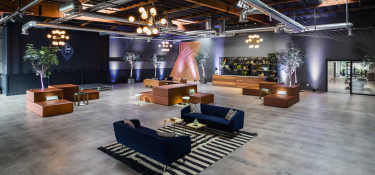
One of the most important factors to holding a successful event is the venue where the event takes place. The wrong venue could ruin your event while the perfect venue can help your event be as successful as possible. Bottom-line, venue selection matters a lot, and using a venue directory to find the perfect place for each of your events can make the process of finding and choosing venues quick, easy, and reliable.
According to research by EventMB, more than half of event organizers (58.3%) find venues using online search engines. Not only is this process time-consuming, but many of the best venues may not even show up near the top of search engine results pages. The highest rankings typically go to the venues that invested into search engine optimization and other marketing tactics to boost their search rankings. That doesn’t mean they’re the best venue for your event.
To ensure you control your venue search (rather than search engines), you can use a comprehensive venue directory, like the one coming soon from AttendStar, and find the perfect venue without dozens of online searches and endless mouse clicks. A good venue directory instantly shows you all of the details about a venue based on your specific needs and search criteria.
TIPS TO USE A VENUE DIRECTORY TO FIND THE RIGHT EVENT VENUE
THE PRICE SHOULD BE RIGHT – FREE
You shouldn’t have to pay to search a venue directory, and venues shouldn’t have to pay to be listed in directories. The reason is simple. If venues have to pay, then only those with bigger marketing budgets will be included – similar to how the venues with deeper pockets are likely to appear on the first page of search engine results pages. This limits your search and could prevent you from finding the perfect place to hold your event.
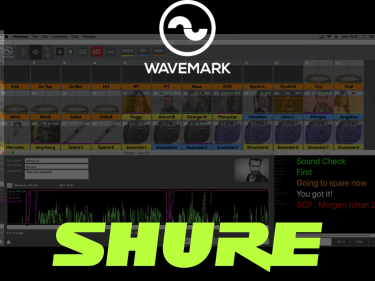
CHICAGO, November 11, 2020 — Shure is strengthening its focus on software solutions by announcing a strategic investment in Finnish software company Ab Wavemark Oy.
Known for its software solutions for theater, broadcast, and content streaming applications such as Wavetool and WTAutomixer, Wavemark has recently expanded its software portfolio into streaming applications. It now offers WTAutomixer, a plug-in enabling seemless auto-mixing for uses like podcasting, remote learning, and house of worship services. WTAutomixer is the first multi-channel gain sharing automixer that can be inserted to almost any DAW as a VST3, AU, or AAX plug-in. WTAutomixer automatically controls the gains of multiple microphones and is ideal for live streams, discussion panels, talk shows, religious services, and for any application that requires the use of multiple microphones. Wavemark software has been used in conjunction with several high-profile theater applications using Shure Axient® Digital Wireless Systems.
Shure’s software offerings, which include Wireless Workbench® for live events, plus Designer, SystemOn, and its new IntelliMix® Room Audio Processing Software for integrated systems, provide customers with a variety of different solutions for audio management.
Featuring a hybrid modular synthesis approach, PreSonus®’ Deep Flight One instrument library for Studio One®’s Presence XT sampler draws on rare and sought-after analog and digital synthesizers and layered field recordings, sweetened with legendary and exotic signal processors, to create a huge range of organic, deep, and inspiring sounds. Use Deep Flight One’s Multi Instrument presets straight up or combine its elements any way you like to create unique instruments and effects.
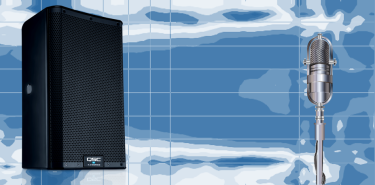
Loudspeakers can be described and specified in a number of different ways, making a buying decision more complicated than it needs to be. Therefore, having some understanding of the jargon used to specify loudspeakers is essential to make sure the product you are buying is the right one for your needs. For passive loudspeakers, the maximum admissible power rating (in watts) is probably the most important parameter to ensure safe operation and good sound quality.
However, with active loudspeakers, which have a different design paradigm, there are several parameters to consider. The aim of this article is to clarify a few of these parameters and explain the relationships between them. In short, watts does not equal sound pressure level. Let’s find out why?
The Meaning of Driver Sensitivity
First, a loudspeaker driver is a transducer that converts an electrical audio signal into sound waves. In a loudspeaker, each individual driver has a set of technical specifications and one of them is called its sensitivity. A drivers’ sensitivity is a measure of the relationship between the power fed to it and the sound output generated (SPL). A driver’s sensitivity is measured in decibels (dB), at one meter (3.3 ft) from the unit, by feeding it one watt (2.83 volts for a driver with an 8 ohm impedance) of electrical energy. As an example the specification could read 87 dB (1w/1m). Sensitivities of different drivers can be compared because the audio industry has established the above measurement standard.
The higher the sensitivity rating of a driver, the louder it will play with a certain amount of input power (wattage). Sensitivity measurements of 88 dB (1w/1m) are about average and anything below 84 dB (1w/1m) is considered poor. Sensitivity equal or higher than 92 dB (1w/1m) are sought after.
Let’s recall here also that in order to increase the output of a driver by 3 dB you will need to double the amplifier power. To increase the output by 6 dB, you will need to increase the power by a factor of four, etc. For example, if a driver has a sensitivity of around 88 dB (1w/1m), you will need two watts to obtain 91 dB at 1 meter.
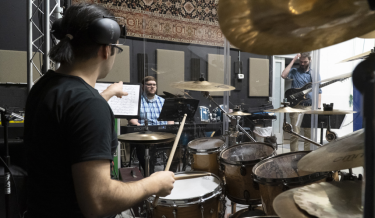
“With TouchMix, nobody needs 45 minutes to get set up anymore, and for bands to spend more of their paid time playing means I have more satisfied customers.”
Saint Louis Park, MN (November 17, 2020) — [Fr, De, Es] — Taylor Sound is a full-service studio serving musicians in the Minneapolis–Saint Paul metropolitan area. Located just west of Minneapolis, the complex features rehearsal rooms, on-site recording, and even music video production in a massive, green-screen-equipped room. Facilities manager T. Perry Bowers wanted to increase access for local bands and artists who lacked the budget to lock out a rehearsal space of their own, so he created the Band Share program, in which bands pay for one or two nights per week in a room equipped with a drum kit, backline, and P.A. For the latter, he chose QSC TouchMix-8 and TouchMix-16 touchscreen digital mixers as well as the full range of QSC K.2 Series active loudspeakers.
“All three of our Band Share rooms are bookable online, and you can get an access code and come in without ever talking to a human being in person,” explains Bowers. “Room A, the smallest, is good for a trio or quartet, and contains a TouchMix-8 digital mixer and K8.2 series loudspeakers. Room B has a TouchMix-8 and pair of K10.2. In room C, the largest, we have the TouchMix-16 and four K12.2s. All of the loudspeakers are set up as main PA monitors, though sometimes bands move them because they want to practice as if they’re onstage.”
In celebration of their 25th anniversary, PreSonus® announced the new River City Sessions performance series. The online series features artists performing in PreSonus’ world-class, Roger Storyk-designed River City Studio at PreSonus HQ in Baton Rouge, Louisiana. The first episode debuted today, featuring Justin Garner, as recorded by Eric Welch.
The monthly, genre-agnostic online series will feature hand-picked up-and-coming artists from Louisiana and beyond, offering them a chance to record a few songs and a video in exceptional fidelity—for free. Each episode is intended to capture the live, performative spirit of the artists, with minimal attention to overdubs, layering, etc.
Each performance concludes with a brief Q&A with each session’s engineer about the recording techniques and creative approach employed. Like the featured artists, engineers will be different with every episode.
“This is something we’ve wanted to do for a long time,” said Wesley DeVore, PreSonus’ Product Marketing Manager. “Independent artists are the lifeblood of PreSonus. The River City Sessions give us a chance to support the kind of musicians that help build our company and share their work with a global audience.”
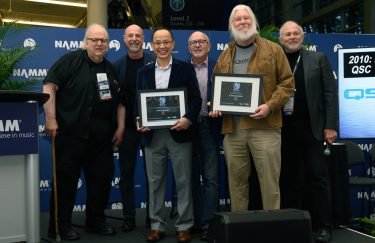
“The K Series established QSC as a leader in active loudspeakers.”
COSTA MESA, CA (January 22, 2020) — QSC is proud to announce that K Series active loudspeakers have been inducted into the TECnology Hall of Fame at the 2020 Winter NAMM Show in Anaheim, California. Founded in 2004 by former Mix magazine editor George Petersen, the TECnology Hall of Fame honors and recognizes audio products that have made a significant contribution to the advancement of recording, live sound, and audio technology. To be eligible for consideration, products must have been on the market for at least ten years.
Launched in 2009, the QSC K Series sported a best-in-class 1,000 watts of extremely clean amplification in an ABS enclosure that combined a 1.75-inch compression tweeter with either an 8-, 10-, or 12-inch woofer. A dual-12-inch KSub active subwoofer completed the line. The K Series remarkably delivered both studio-quality sound as well as powerful and even coverage at a then unheard-of light physical weight. Along with its other groundbreaking features such as Directivity Matched Transition (DMT), Intrinsic Correction Tilt-Direct pole cup and versatile DSP Presets, K Series made its mark as having raised the bar for what performers and live sound professionals should expect from an active loudspeaker. More recently, the company released the QSC K.2 Series, further demonstrating the company’s commitment to maintaining its dominance in the category.
“At the launch of K Series, QSC was already at the forefront of audio technology, widely accepted and appreciated as a manufacturer of high-quality, high-performance amplifiers and processors,” says Ray Van Straten, Senior Director of Marketing at QSC. “But it was the K Series that not only put us on the map as a loudspeaker manufacturer, but truly established QSC as a global leader. The fact that NAMM and the TECnology Hall of Fame are validating that legacy is incredibly gratifying to the many talented people and teams at QSC who brought this product to market, as well as our channel partners and customers worldwide who, to this day, place their trust in us to provide quality, professional solutions that deliver great experiences.”
A quarter century ago, two former high school and LSU School of Engineering classmates were inspired to found a new company called PreSonus®, where they would design innovative audio products with professional sound quality and features without sacrificing affordability. Working in a borrowed garage space in Baton Rouge, Louisiana, Berklee-trained guitarist, producer, and audio engineer Jim Odom and fellow engineer (currently Vice President of Manufacturing) Brian Smith started by creating the DCP-8, which was the first product to offer digital control over analog audio circuits—a design PreSonus patented in 1995.
“At the time we designed our DCP-8, other options were esoteric gear costing tens of thousands of dollars,” recalls Odom, now the company’s President and Chief Strategy Officer. “We were recording and wanted the same equipment as the big studios but we couldn’t afford it, so we built our own, starting PreSonus with three employees and an output of five or six units a week. Then and now, our philosophy has been to design products that people can afford.”
Although the DCP-8 had reasonable success, Odom observes, “it missed on some features the customers really wanted. We were close but had to listen more closely to our customers. It was an enormous lesson for me as a product designer. Our second version, the ACP88, was a tremendous success.”
Lesson learned: Listening to customers has been a key part of PreSonus’ product development ever since. To this day, many of the company’s best product designs and updates have been based on customer feedback.
Over the following 25 years, PreSonus went on to create a steady succession of breakthrough products. Odom and Smith introduced such innovative products as DigiMax (2000), the first 8-channel microphone preamplifier with ADAT Lightpipe output; Central Station (2004), the first monitor controller with talkback; and some of the first multi-channel FireWire interfaces, including the FirePod (2004) and FireStudio series.

LOS ANGELES, December 18, 2019 – The American Music Awards (AMAs), the world’s largest fan-voted awards show, relied heavily on Shure products for its worldwide broadcast. A live performance by Taylor Swift, who was named “Artist of the Decade,” featured a customized Shure Axient® Digital KSM8 microphone.
Shure Axient Digital was used for several performances, including Billie Eilish, Green Day, Camila Cabello, Post Malone, Ciara, and Thomas Rhett.
The audio team used 24 channels of Shure Axient Digital to power the artists at the AMAs.
“Axient Digital is quickly becoming the new standard for artists we see on all the award shows,” said Mikael Stewart, VP Special Events, ATK Audiotek, which handled FOH production for the awards broadcast. “I love its sound as a production mic. It has the reliability and quality we’ve come to expect from any Shure product.”

Your wedding is probably the priciest, most complicated party you’ll ever spend money on. In 2017, the average cost of a wedding skyrocketed to $38,700, according to The 2019 WeddingWire Newlywed Report.
Navigating the planning process can be difficult when everyone seems to have an opinion on what traditions are necessary and what you absolutely need to do. Combine that with the FOMO from seeing picture-perfect weddings on Instagram and Pinterest, and you can find yourself in debt or despair (or, if you’re lucky, both!).
Luckily, weddings are scalable. No matter what prestige bridal magazines say, you can have a truly memorable celebration, whether your budget is $5,000 or $500,000. It just takes discipline and a clear-eyed vision of what you and your partner want in a wedding. Your idea of a beautiful and meaningful wedding may not include a tropical honeymoon, monogrammed wine glass favors, or matching bridal dresses — and that’s OK! What matters is that your wedding truly represents you and your partner-to-be.
We spoke to Jessica Bishop, founder of TheBudgetSavvyBride.com and author of “The Budget-Savvy Wedding Planner & Organizer,” and asked for her advice navigating the pains and joys of wedding planning.
Putting all of your wedding expenses on your credit card may feel tempting. Instagram, Pinterest, and wedding magazines are filled with images of designer ball gowns, fairytale-themed venues, and professional calligraphy — and combined with the social and familial pressure for weddings to be perfect, taking on debt may feel like the best option.
However, at Reviews.com, we recommend exercising caution before putting a down payment on a venue you cannot afford.
Money is already a fraught topic for many couples. Combining your life with someone who may have a different history, philosophy, and level of education when it comes to money is difficult enough. In fact, money disagreements are one of the biggest causes of divorce in the U.S.
Starting your marriage in the red — especially if one or both of you already has student loans — could make matters more stressful than they need to be.
If the cost of a wedding feels too daunting right now, try scaling back the wedding or elongating your engagement. This is a better long-term decision than, say, racking up credit card debt or raiding your 401K or mortgage.
Big Deal is providing sound, stage and lighting for the 2019-2020 Promenade Music Series in Casa Grande!
Each event is completely FREE and features giveaways, food trucks, and a variety of great bands every other weekend. Bring a chair and join us at the Promenade at Casa Grande! 1005 N Promenade Pkwy., Casa Grande, AZ 85194
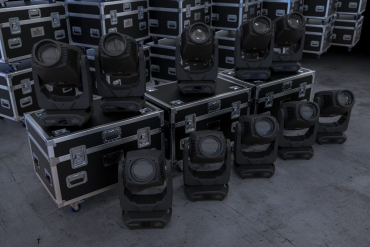
SUNRISE, FL – Powerful enough to handle the demands of large concert venues, the new Maverick MK3 Profile from CHAUVET Professional also has the versatility needed to excel in a wide range of other applications from high-profile events and festivals, to broadcast projects.
A fully featured 820W LED moving profile fixture, the Maverick MK3 Profile has a blistering output of over 51,000 source lumens, giving it the punch to create intense aerial effects, specials and audience lighting at any touring show. In addition to this eye-popping output, it offers a plethora of high-performance features, including a 4-blade, fully wiping shutter system that can rotate up to 60° in each direction, for a total 120° rotation capability.
Adding to the fixture’s versatility are its precise CMY + CTO color mixing and a fast 9:1 zoom ratio that maintains a flat field, and even focus from 6 degrees all the way out to 54 degrees. Thanks to its two overlapping prisms, two gobo wheels, two frost options (super-light and medium) and an animation wheel, the fixture creates captivating static, and dynamic rotating and animation effects.
Drawing on this extensive array of features, designers can use the Maverick MK3 Profile to create an endless variety of looks to reflect different moods on the concert stage or event venue.
Page 2 of 23